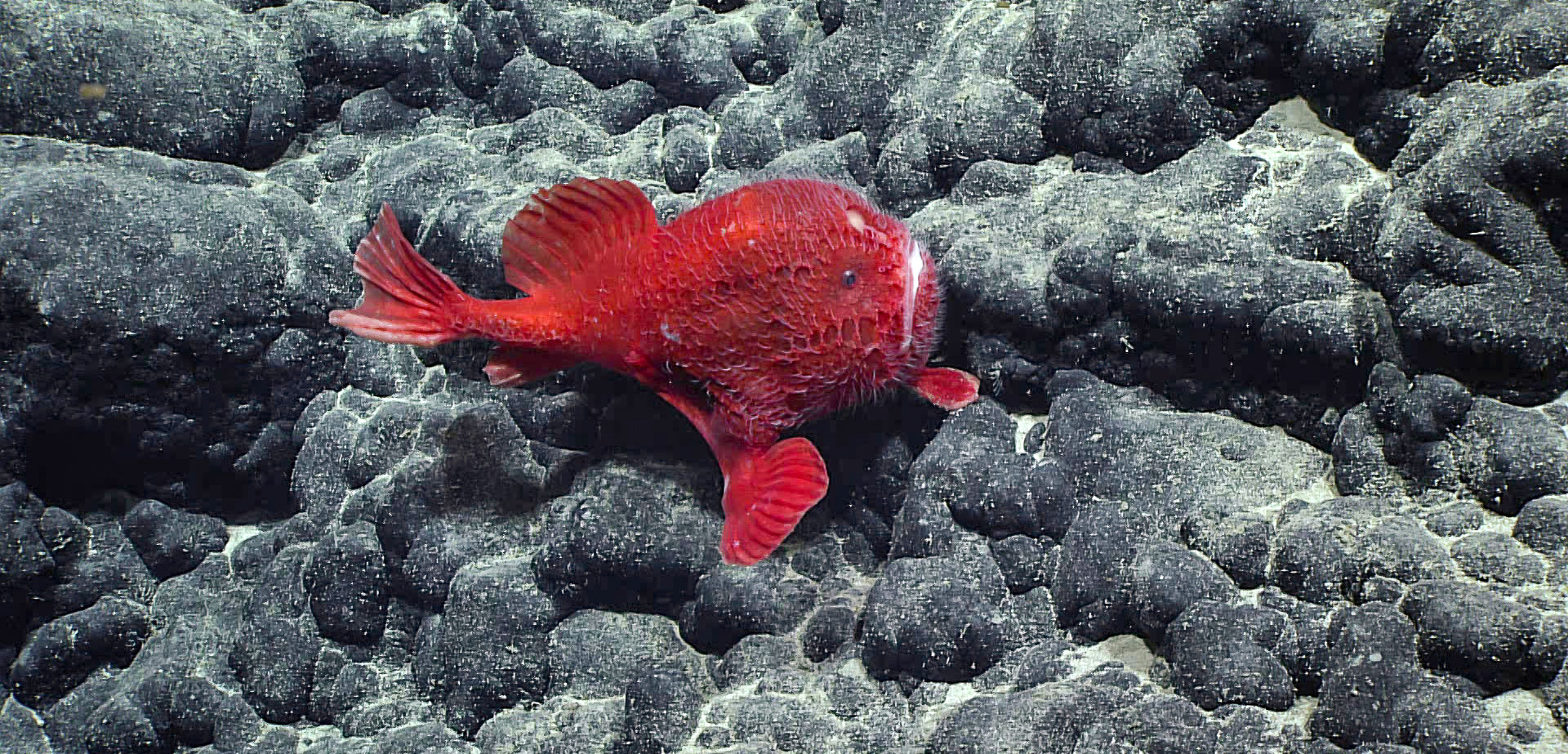This Fish Can Hold Its Breath
Scientists think coffinfish go minutes without breathing to conserve energy.
Article body copy
Deep down on the ocean floor, a coffinfish inflates like a balloon as its gill chambers swell with water. The fish is holding its breath—and it will do so for several minutes. “This is a unique behavior for water-breathing fishes,” says Stacy Farina, a biologist at Howard University in Washington, DC, and the author of a new report documenting the discovery. “It’s the only case we’ve ever seen.”
For fish, strategies to make breathing more efficient are a huge advantage. Water is dense, and compared to air, a poor carrier of oxygen, so fish need to actively pump water into their gill chambers to efficiently extract the dissolved oxygen. This task can require up to 15 percent of a fish’s total energy budget.
Farina and Nicholas Long, an undergraduate student at Dickinson College in Pennsylvania, discovered the distinctive adaptation while watching videos of several species of coffinfish captured by a US National Oceanic and Atmospheric Administration deep-sea submersible in the Gulf of Mexico and North Atlantic. They were surprised to see the fishes stop pumping their gills. Previously, Farina had studied goosefish, a shallow-water relative of the coffinfish, and discovered that they breathe extremely slowly, taking about two minutes to inhale and exhale. But even goosefish never stop moving their gills. “We were expecting similar behavior,” she says.
A coffinfish can expand its volume by about 30 percent while holding its breath. Video courtesy of Stacy Farina
By timing how long it took for coffinfish to finally exhale, Farina found that the fish can hold its breath for up to four minutes. But she suspects that’s not the animal’s upper limit, since sometimes a video clip would end before the fish exhaled.
Despite the inefficiencies inherent in breathing water, there is a good reason that most fish don’t hold their breath. Fish typically need to supply their tissues with enough oxygen to sustain their movements. Refraining from pumping would bring in less of it. Coffinfish, however, have an incredibly low-key lifestyle. Coffinfish will often remain still on the seafloor or use their fins to “walk” while hunting for a range of prey, from fish to octopuses to worms. They also don’t eat very often: Farina suspects they only consume food every few weeks. For them, minimizing energy expenditures is what it’s all about.
It’s also possible that coffinfish are obtaining some oxygen through their skin—a tactic used by a lot of fish with thin scales, says Farina.
Farina and her colleague scanned and dissected museum specimens and discovered that coffinfish have enormous gill chambers, which facilitate breath holding. “They probably have the largest gill chambers relative to body size that we’ve ever seen,” she says.
Farina suggests the ability to pack their gill chambers full of water could have other advantages, too. It could double as a defense strategy to deter predators, for instance, since puffing up makes the fish appear larger—a tactic similar to that used by pufferfish and swellsharks.
Hsuan-Ching Ho, an evolutionary biologist at the National Dong Hwa University in Taiwan who was not involved with the research, is skeptical the coffinfish gets any defensive utility from its unique ability. Pufferfish can lock in their inflated shape, maintaining it even if a predator bites them. But that’s not the case for coffinfish. “If a predator bites them and pushes hard enough, the water will leak out and they will be eaten,” he says.
But Ho says the discovery of the coffinfish’s breathing strategy is interesting because it gives insight into how the fish has adapted to life in the deep ocean.
The deep sea is incredibly difficult to study, and organisms living there are awash in interesting adaptations. For her part, Farina suspects other deep-sea fish species may also be able to hold their breath. “We want to keep looking because it is an open question as to whether or not this is a completely unique behavior,” she says.

